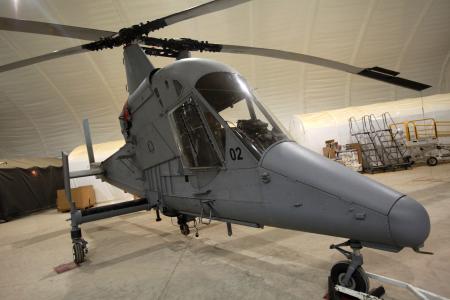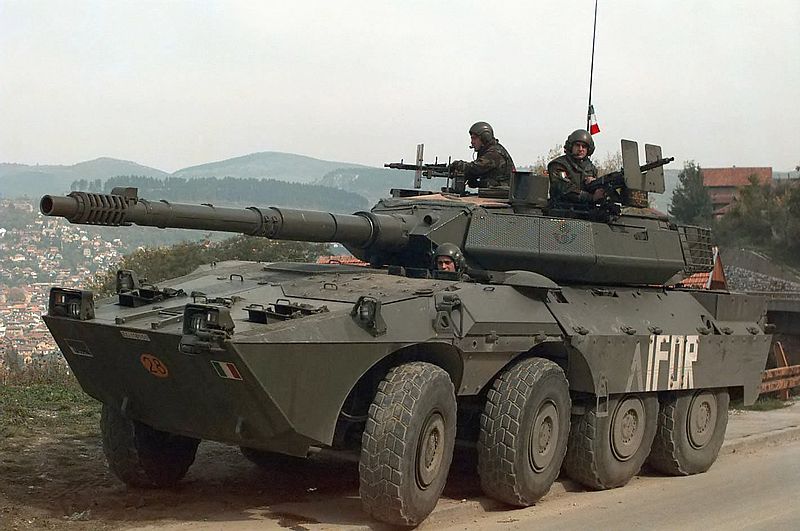Improvised explosive devices have changed the way the Marine Corps engages hostile forces. The need has risen for supplies to reach the most remote parts of Afghanistan quickly, reliably and safely.
Late last year, the Corps began experimenting with the K-MAX – an unmanned helicopter, able to transport large amounts of cargo and reduce the need for convoys.
With troops spread across a desolate country with few paved roads, steep mountains, rocky terrain and abrasive weather, the K-MAX has arrived to help deliver supplies across the harsh lands of Afghanistan.
Presently, convoys are exposed to many potential dangers, such as improvised explosive devices and ambushes. Both have claimed the lives of Marines in the past.
“The need (for an alternate transport solution) came about because the Marine Corps wanted to get trucks off the road,” said Maj. Kyle O’Connor, the detachment officer in charge for Cargo Resupply Unmanned Aircraft Systems (CRUAS), a component of Marine Unmanned Aerial Vehicle Squadron 1.
“They wanted to be able to deliver supplies from one locale to another without putting Marines in danger of IED’s,” he said. “The Marine Corps needed a fast, reliable platform with which to deliver to COPs (Combat Outposts).”
The K-MAX platform has a unique configuration. The two sets of rotors are mounted side-by-side and turn in opposite directions. Each rotor on the helicopter is mounted at a slight angle to the other so that the blades can spin simultaneously without colliding. This configuration allows for superior stability and power while eliminating the need for a tail rotor.
K-MAX has, thus far, fulfilled the Corps’ request of transporting large amounts of cargo over great distances in an expeditious manner.
O’Connor explained that in the month of March alone, the K-MAX ferried approximately 500,000 pounds of cargo and has transported more than 1.3 million pounds since its arrival five months ago. It has flown roughly 400 missions in theater.
O’Connor said the K-MAX has performed so well that the original six-month trial has been extended in theater.
“It’s such a new system for the DoD (Department of Defense) that there isn’t a whole lot of reliability data for it,” he said. “Since it’s done so well, the deployment extension is going to give us more time to continue to gather data on its performance and transport more cargo.”
The data collected will give Corps officials insight on whether to keep the K-MAX as a permanent addition to the Corps’ unmanned squadrons.
“We’re flying to see if there are any issues and see if problems come up,” O’Connor said.
While data is being collected, new tactics, techniques and procedures have been created to weave the K-MAX into everyday operations across Helmand province.
Sgt. Trevor Scarberry, an Air Vehicle Operator with CRUAS said he has helped create new procedures for the aircraft.
“Since no one has done this and it’s all brand new, we’re having to develop new ways of doing things,” said Scarberry, of Choctaw, Okla.
He said new procedures have been implemented for safety, landing zone and air space coordination. One such procedure ensures the safety of ground crews unloading the K-MAX once it reaches its destinations. The intermeshing duel rotors spin within a few feet of the ground and surrounding personnel must be keenly aware of the down tilt of the rotor blades.
Even though the K-MAX is still in its trial run, Scarberry said he is very pleased with the performance of the aircraft.
“The precision of the system is amazing,” he said. “I’ve been impressed and surprised.”
In addition to resupplying units on the ground, the K-MAX will also support the reduction of international troops. While NATO forces prepare to withdraw from Afghanistan, the K-MAX will be working alongside them.
“As the drawdown occurs, there will be fewer vehicles and a greater demand for air transportation,” O’Connor said. “With K-MAX being extended, we hope to use it to assist in retrograde operations.”
O’Connor added since February, the K-MAX has helped retrograde equipment from several combat outposts and will likely continue these types of operations in the future.











